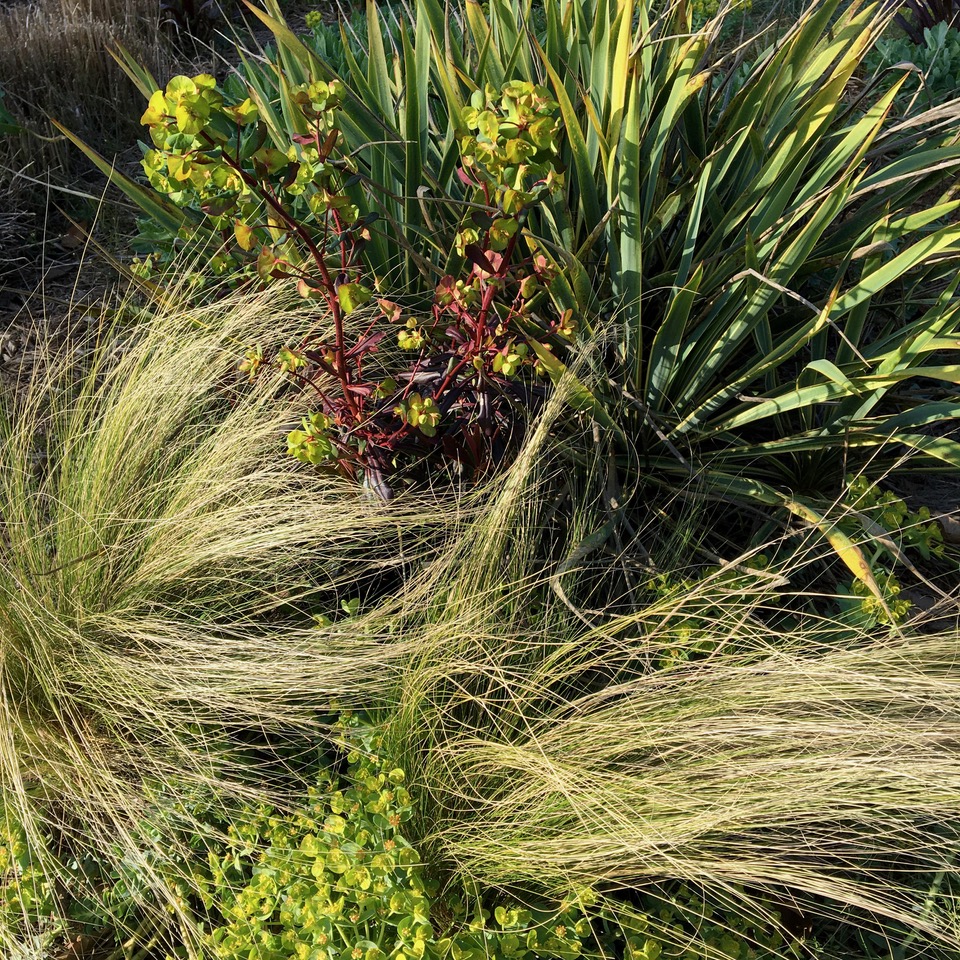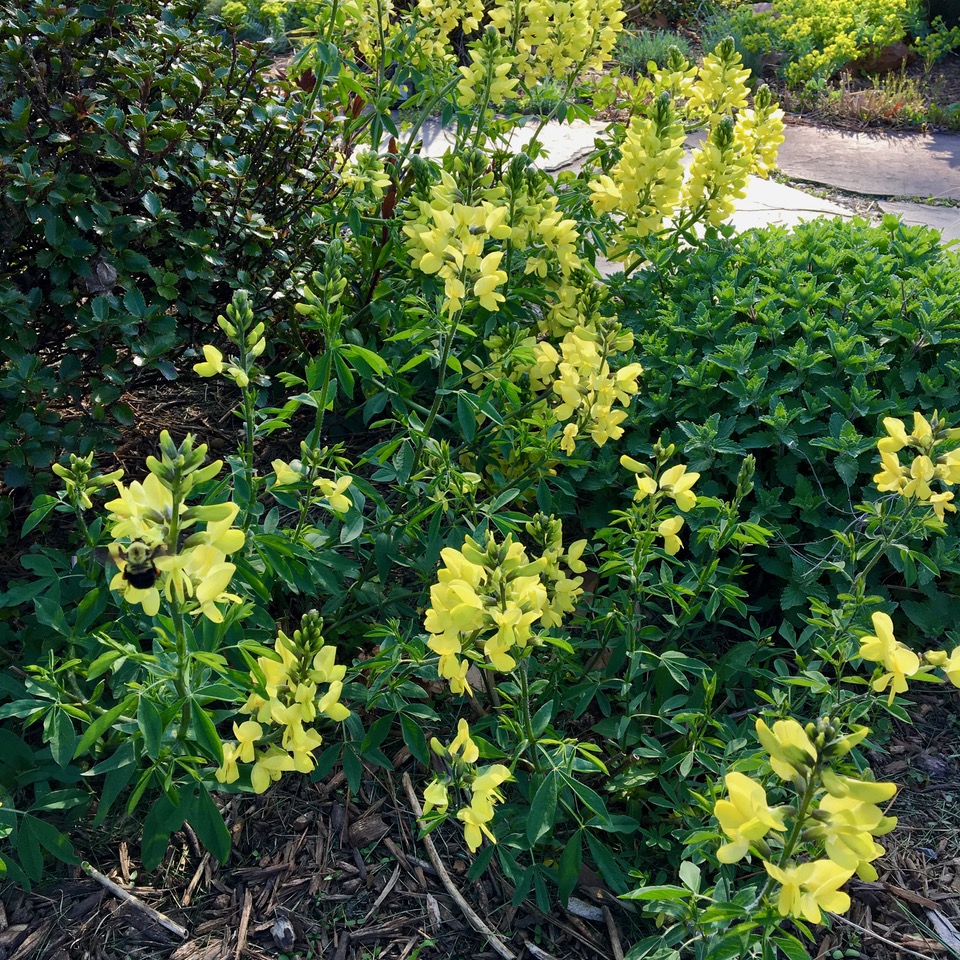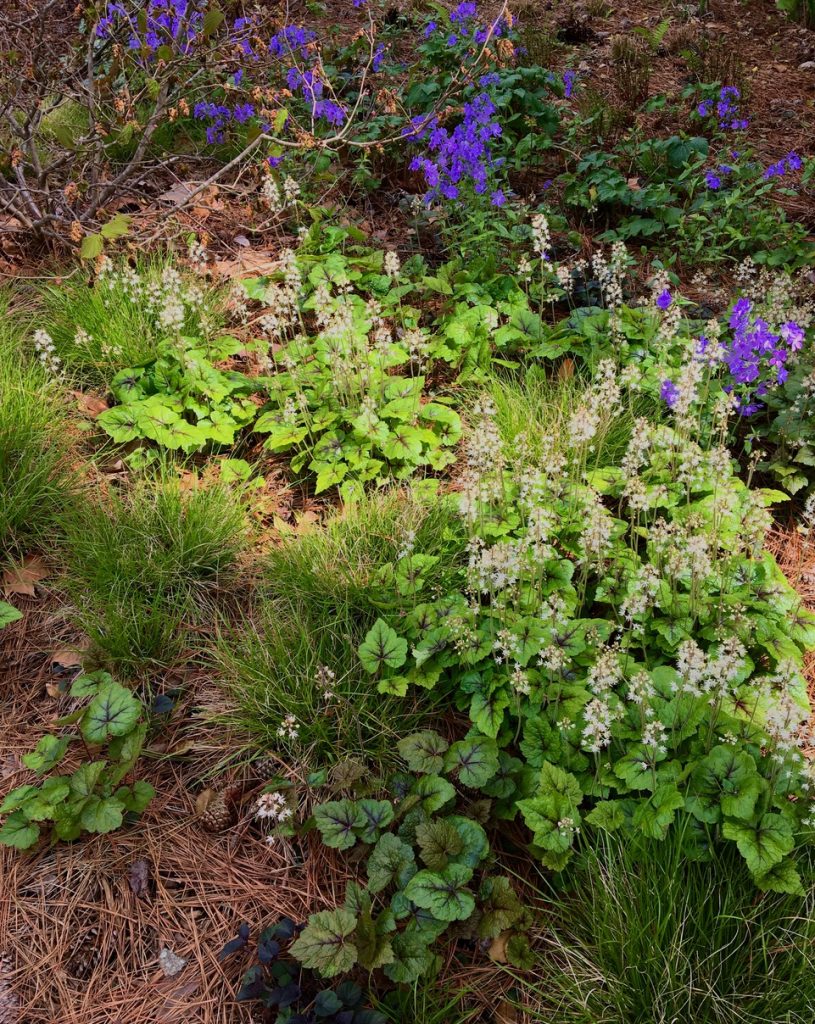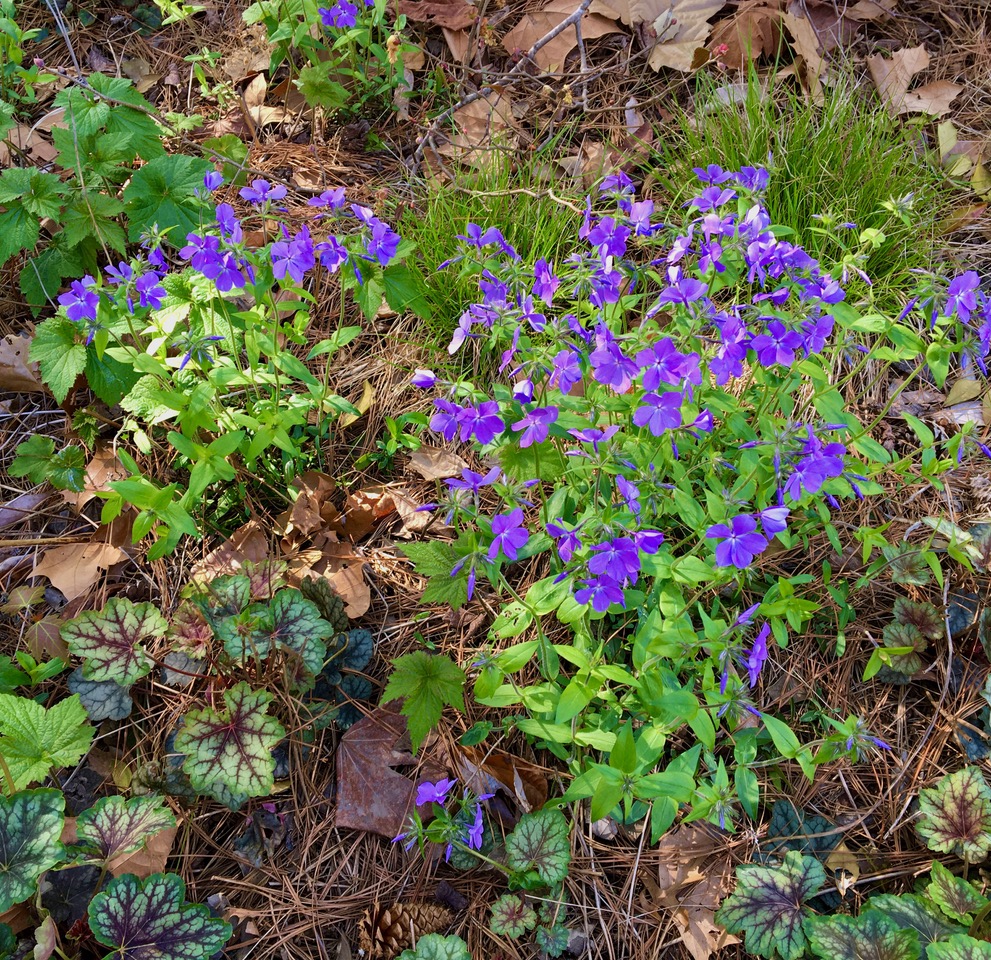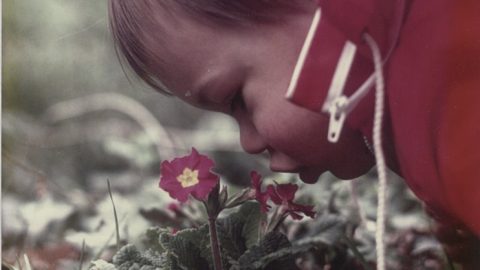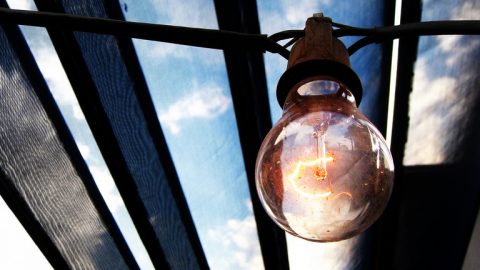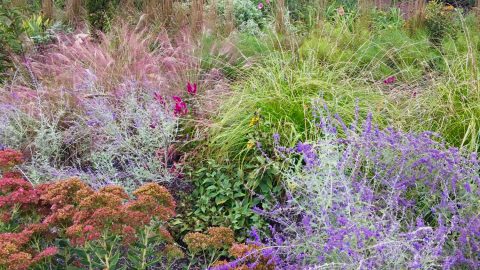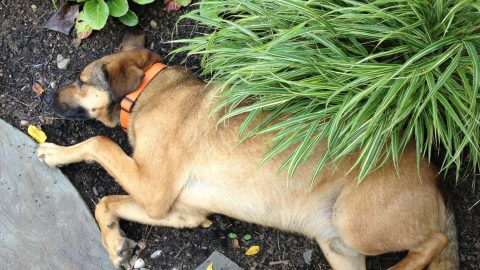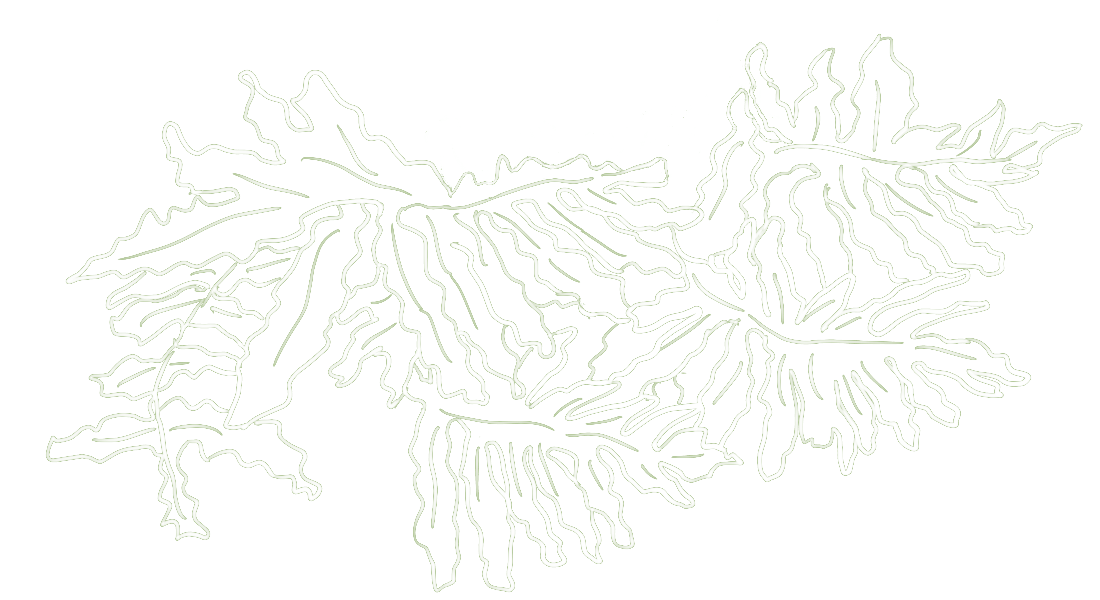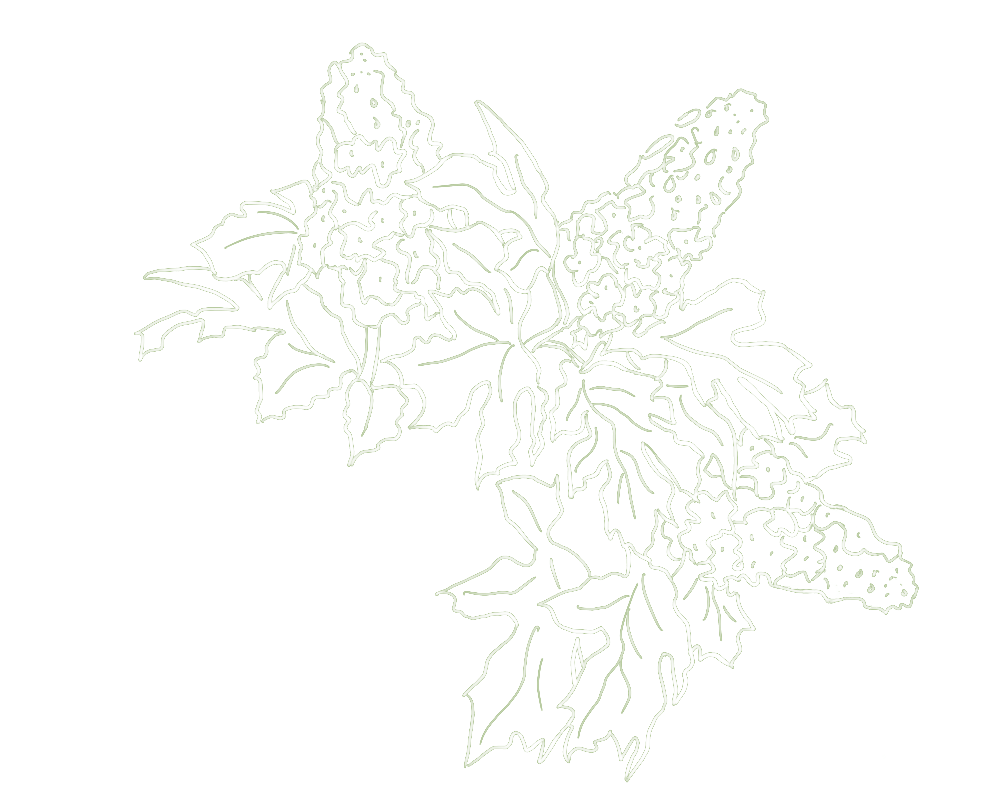Early spring is always a little embarrassing for me. Around mid-March, my friends start saying, “Your garden must be looking beautiful by now!” That would be true if I ever got around to planting the hundreds of bulbs I can see blooming in my mind’s eye every spring. But by bulb-planting season in late fall, I’m usually out of juice. So, no, I don’t have a fabulous display of early daffodils and crocuses and muscari and snowdrops – I have to visit someone else’s garden to see those.
What I do have, though, are lots of perennials with early blossoms or bright new foliage – which means the color (finally!) starts to pop by early April.
Some of the first to bloom are the euphorbias that have spread themselves around the garden. They’re pretty quirky – kind of a Dr. Seuss plant – but I love the acid green of their unusual flowers.
They look particularly psychedelic when combined with orangey stonecrop (Sedum rupestre ‘Angelina’) and purple creeping phlox (Phlox subulata).
Speaking of orange – a color that belongs in every garden in every season, IMHO – check out this vibrant foliage mix of St. John’s wort (Hypericum calycinum ‘Brigadoon’), black mondo grass (Ophiopogon nigrescens) and a Sheffield pink chrysanthemum (Chrysanthemum ‘Hillside Sheffield Pink’). The color of the St. John’s wort will fade some over summer, but for now it’s the star in that corner of the garden. The chrysanthemum’s pale peach flowers will pick up the orange theme in the fall.
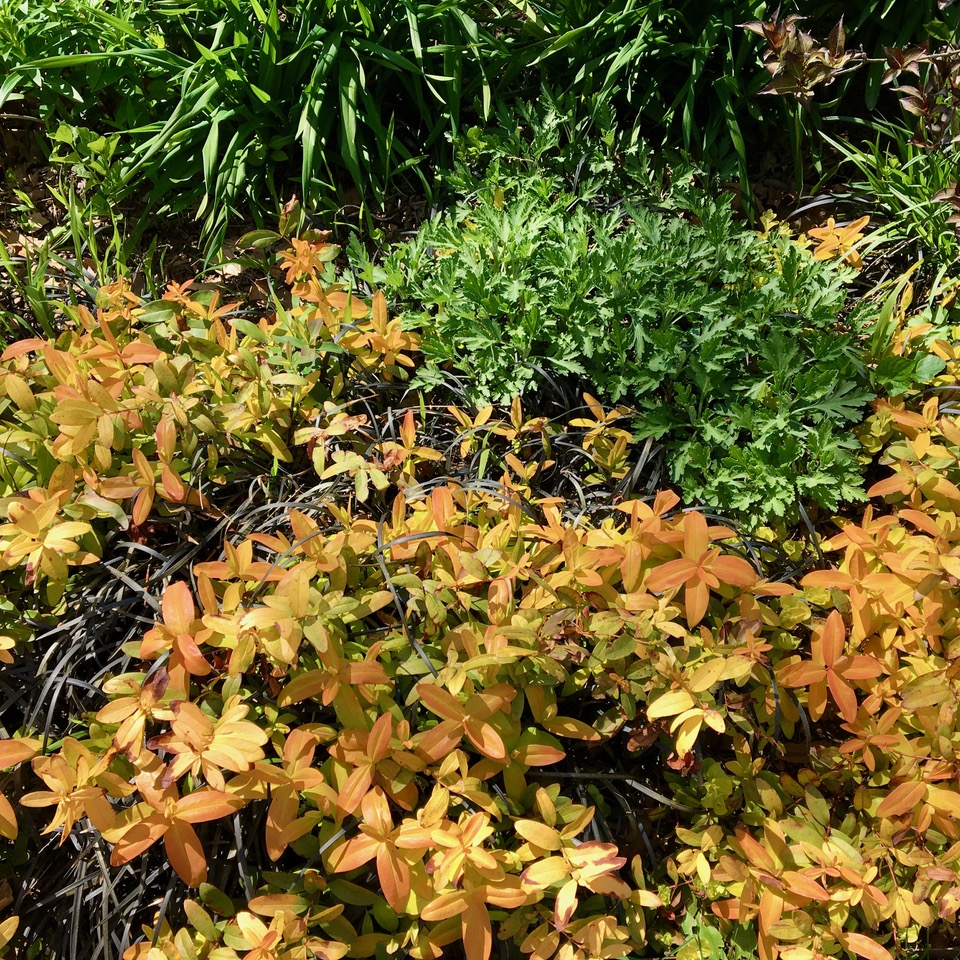 Hypericum, Ophiopogon and Chrysanthemum
Hypericum, Ophiopogon and Chrysanthemum
On the more pastel side of the color wheel, the big, solitary bees just love my false lupine (Thermopsis chinensis ‘Sophia’). I planted it along my front walk to enjoy every time I go out of the house. It gets going by early April, and its pale yellow flowers resembling a snapdragon last for weeks.
In one of the few shady spots in my garden, I’ve planted woodland phlox (Phlox divaricata) with foamflower (Tiarella cordifolia), a classic early spring combination. The addition of some Eastern star sedge (Carex radiata) and a native alumroot (Heuchera longiflora) makes for an interesting study of foliar contrasts.
This fall, I really will plant those March-flowering bulbs that herald the start of spring. But if I don’t, I know I just have to hang on until early April to get my spring color fix.


